Patient Mailbox: How to Remove a Birthmark on the Face
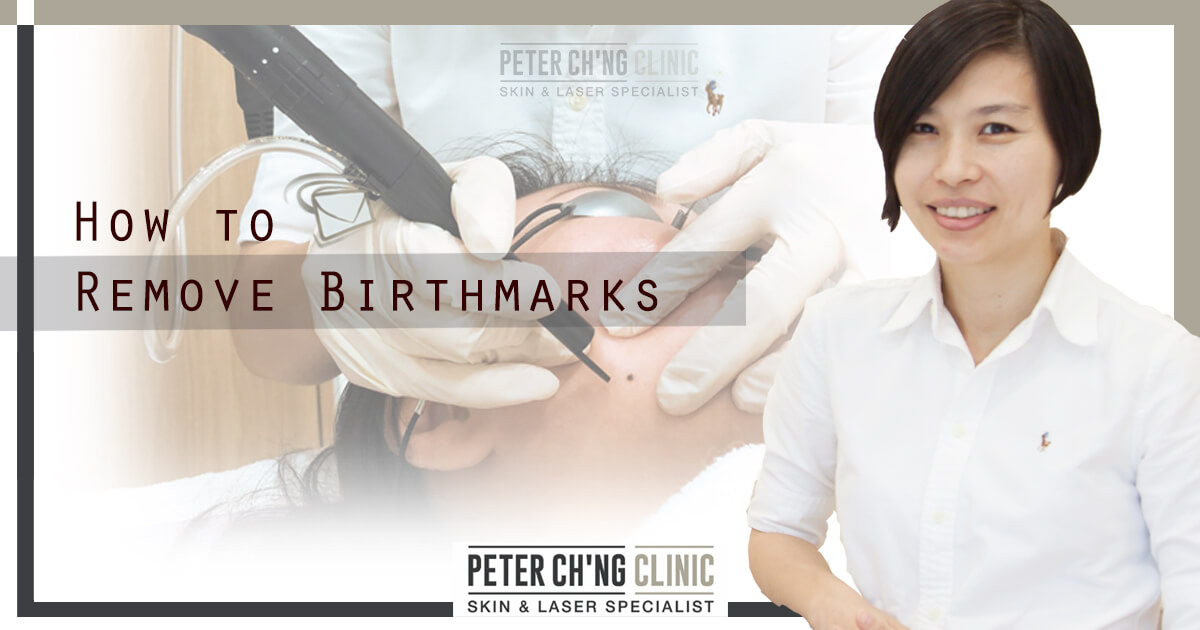
Hi! I’m Dr Loo Keng Shien.
Welcome to Episode 4 of the Patient Mailbox series, where we collect handpicked questions submitted by patients suffering from various skin diseases and condition, and personally answer them with our best efforts. I hope to help any one of you who face challenges from similar situations.
Editor’s Note: Dr Loo Keng Shien is a Consultant Aesthetic Physician with a special interest in Dermatology and Aesthetic Medicine. She has highly certified qualifications from the American Academy of Aesthetic Medicine, American Academy of Anti-aging Medicine, and in Practical Dermatology from Cardiff University. She currently practices at Peter Ch'ng Clinic Skin & Laser Specialist in Desa Park City.
Question:
Hi Dr Loo,
I’m Lydia. My 14 year old son has a birthmark on his face around his left cheek and eye. It is dark in colour but without any bumps or swelling, probably just pigmentation. It has been fine all these years but recently because of teenage peer pressure, he has become more sensitive towards this problem, especially in school.
He’s usually a cheerful kid at home, but becomes very quiet outside because of his skin condition.
How can we help him remove the birthmark? Will it come back?
Answer:
Sometimes we wonder, where do birthmarks actually come from?
Not all birthmarks are formed at birth. Some develop birthmarks when they are born, and others develop them only after birth.
Birthmark growths also vary - some get smaller with time (like infantile haemangioma, more explanation below), while some grow proportionately to the person's physical growth (like port wine stain, more explanation below).
There are 2 main types of birthmarks with their respective sub-types: pigmented birthmarks and vascular birthmarks. I'll go through each of them and their suitable treatments respectively.
Pigmented birthmarks
Pigmented birthmarks are formed by pigment cells on a specific part of the skin. Some common types of pigmented birthmarks are:
Lentigines
Also known as liver spots, these are benign lesions that appear on the skin, usually at areas frequently exposed to the sun like the back of hands and the face.
Lentigines appear as flat lesions with discrete borders, are dark in colour, and usually have irregular shapes. These birthmarks are common among the middle age and older population.
Suitable treatment option: Pigment laser treatment
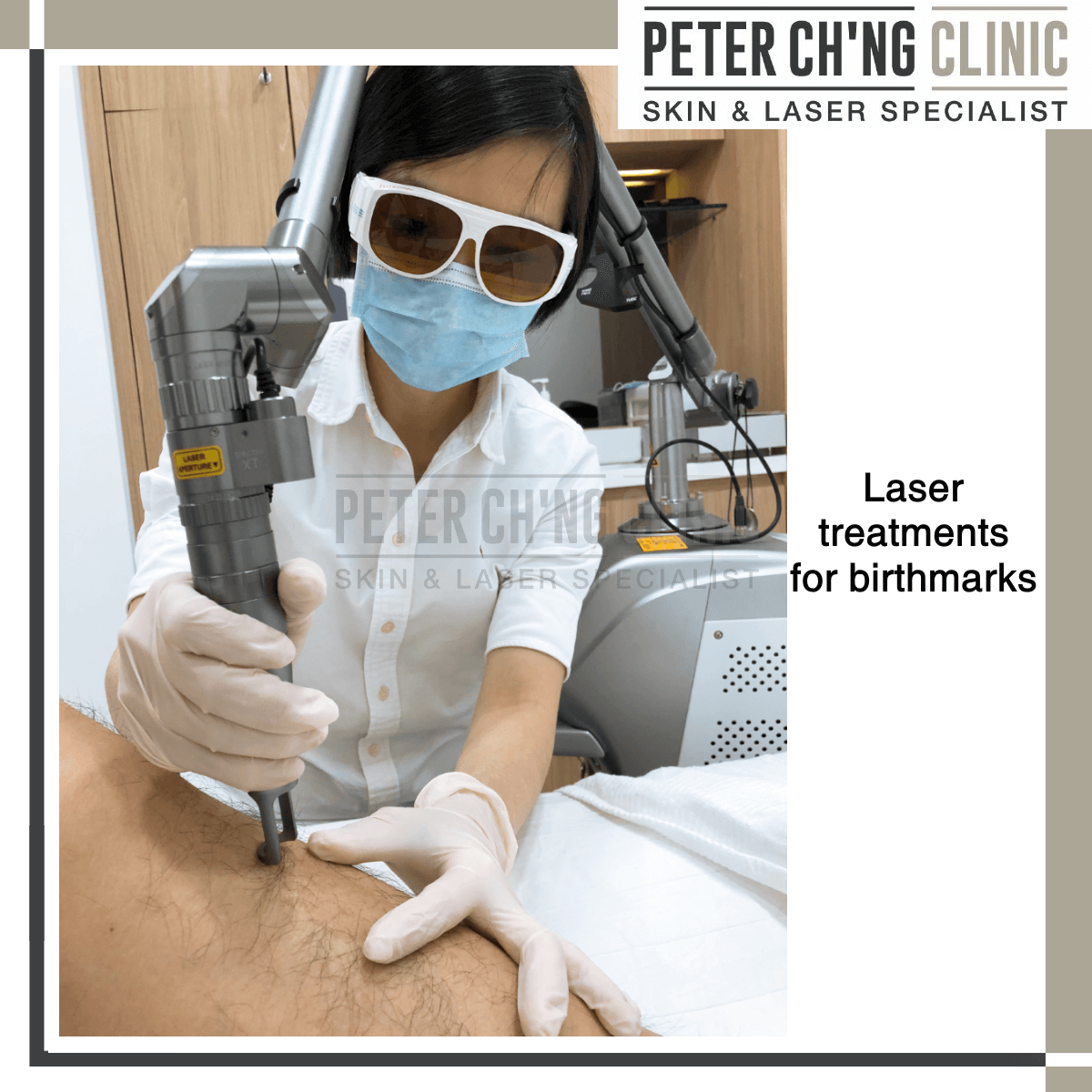
Cafe au lait
Cafe au lait is actually French for "coffee with milk", named after the colour of these birthmarks, which lean towards light brown colour, or dark coffee colour.
Cafe au lait spots can be small or big, and are shaped in oval. Some spots may fade with age or growth, but there are usually still traces of the spots left on the skin
Suitable treatment option: Pigment laser treatment

Moles
Some birthmarks come in the shape of moles, but not all moles are birthmarks. Moles are small, round brown or black spots (usually not bigger than the size of a pencil eraser).
There are many different types of moles: some are flat, some are raised; some moles disappear as we grow, and some also appear along as we age.
However, if you notice your mole(s) changing in shape or colour, or if it itches or bleeds abnormally, you should check with your doctor and have a biopsy immediately to spot any possibilities of skin cancer.
Suitable treatment option: Laser treatments or excision (deeper moles)
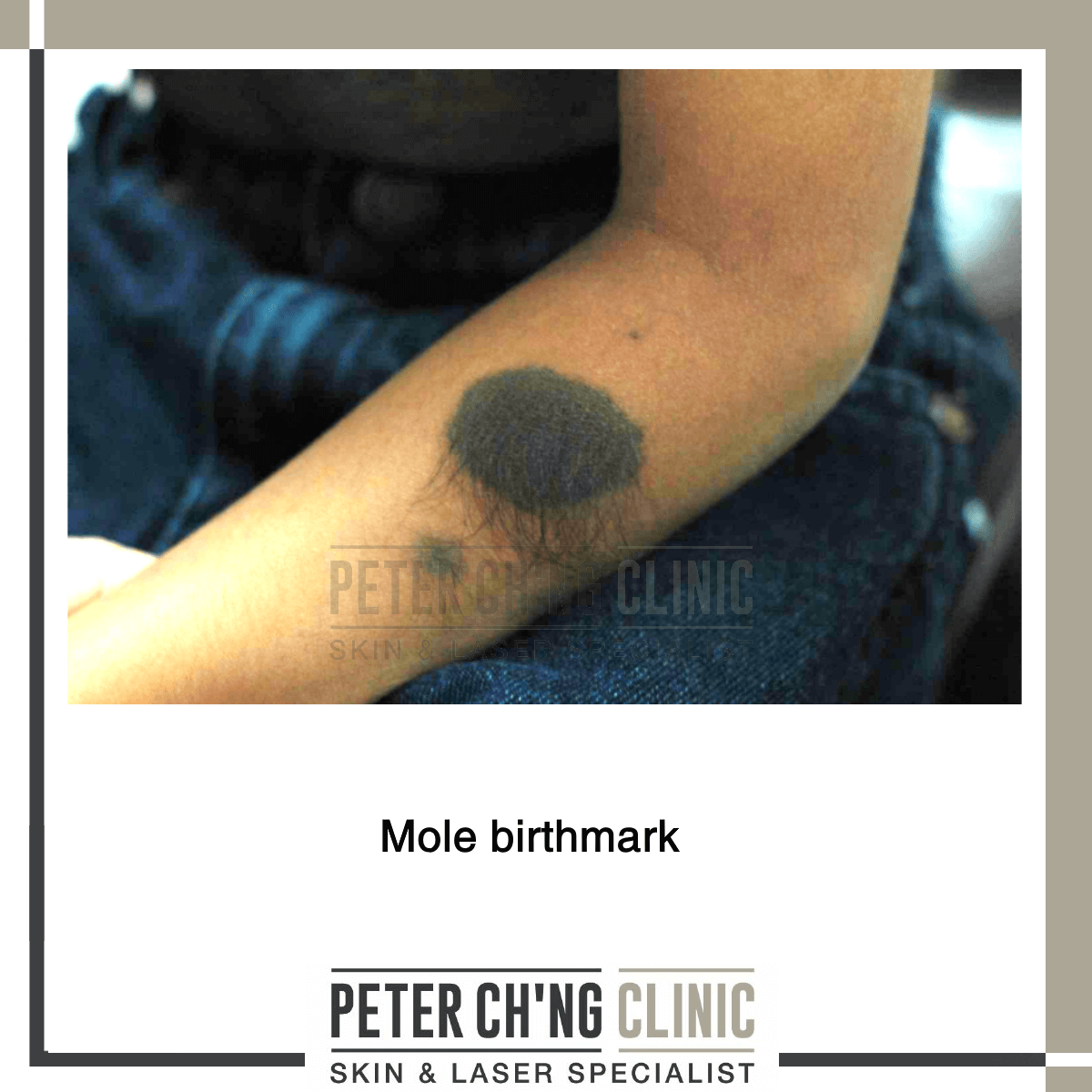
Naevus
A naevus is usually present at birth, and is made up of melanocytes, the pigment cells that produce the dark coloured melanin. Naevi are usually brown or blueish grey in colour.
There are 3 types of naevi:
-
- Naevus of Ota: on the forehead and face around the eye area
- Naevus of Hori: affects both sides of the face
- Naevus of Ito: On the shoulder and upper arm area
Suitable treatment option: Pigment laser
*Editor’s note: Are you looking to get a laser treatment for yourself or a loved one to get rid of a birthmark? To know more about the treatment, call us at +6011-22882299, WhatsApp us here, or book an appointment with Dr Loo here!
Vascular birthmarks
Unlike pigmented birthmarks, vascular birthmarks are not caused by pigment cells. Vascular means the heart and blood vessel system in our body, so vascular birthmarks are caused by blood vessels clumping together, forming a visible mark on the surface of our skin.
Here are some common types of vascular birthmarks:
Infantile Haemangioma
Haemangioma means a group of blood vessels that grow together. This type of birthmarks are common in babies, and look like bright red lumps.
They can shrink or become flat with age, but usually don't disappear completely
Suitable treatment option: Vascular laser
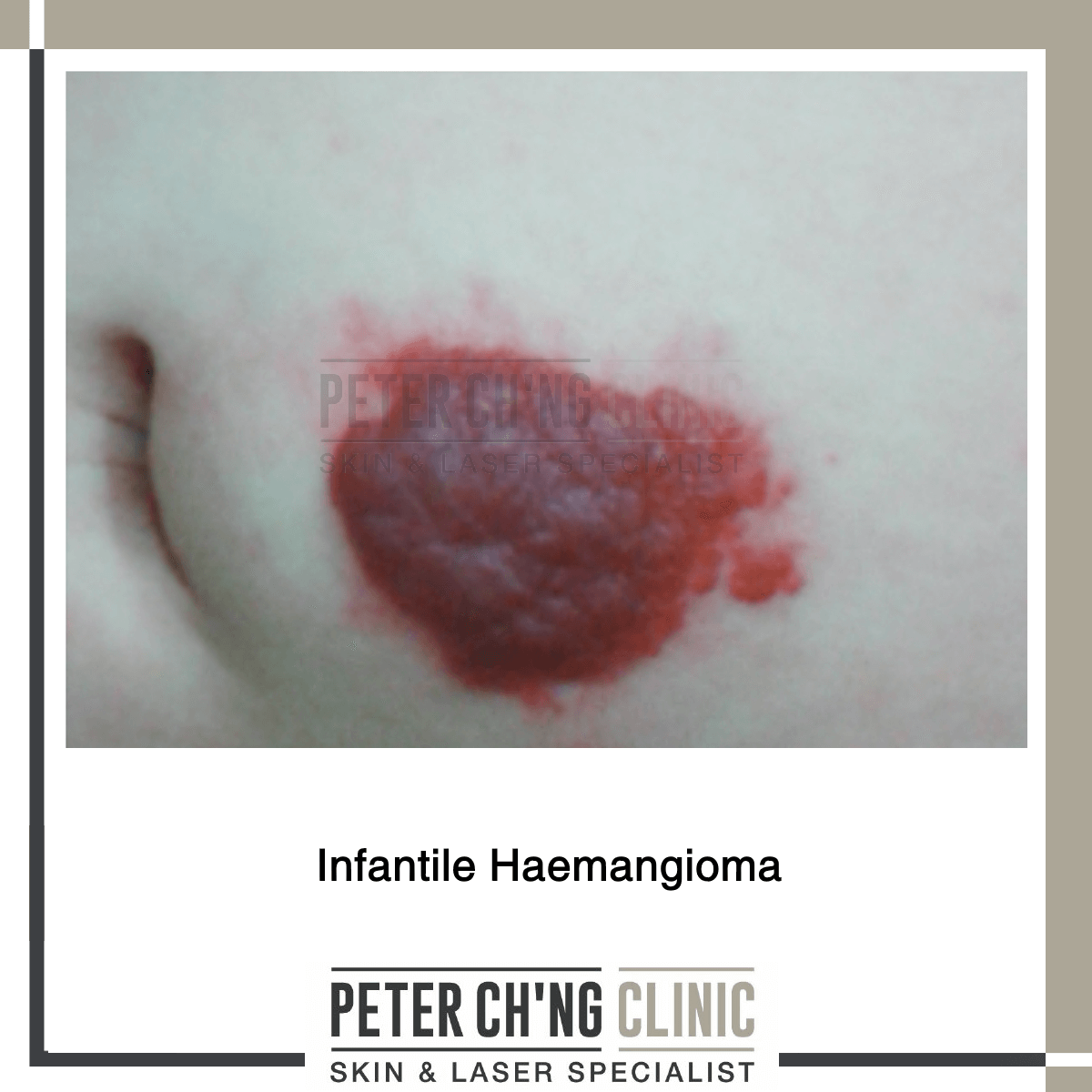
Port wine stain
Port wine stain birthmarks are caused by a malformation of blood vessels. These marks usually appear on the face, and are purplish colour like wine or grapes, hence the name.
Port wine stains don't go away on their own, and may even grow bigger with age
Suitable treatment option: Vascular laser
*Editor’s note: Are you looking to get a laser treatment for yourself or a loved one to get rid of a birthmark? To know more about the treatment, call us at +6011-22882299, WhatsApp us here, or book an appointment with Dr Loo here!
Most of the birthmarks do no harm to our health. However, some can cause severe bleeding, like in the case of Kaposi Haemangioendothelioma, a rare benign tumour caused by abnormal growth of blood vessels.
Some birthmarks may also turn into cancer, like in the case of the giant congenital melanocytic nevus below, which started from a naevus birthmark.
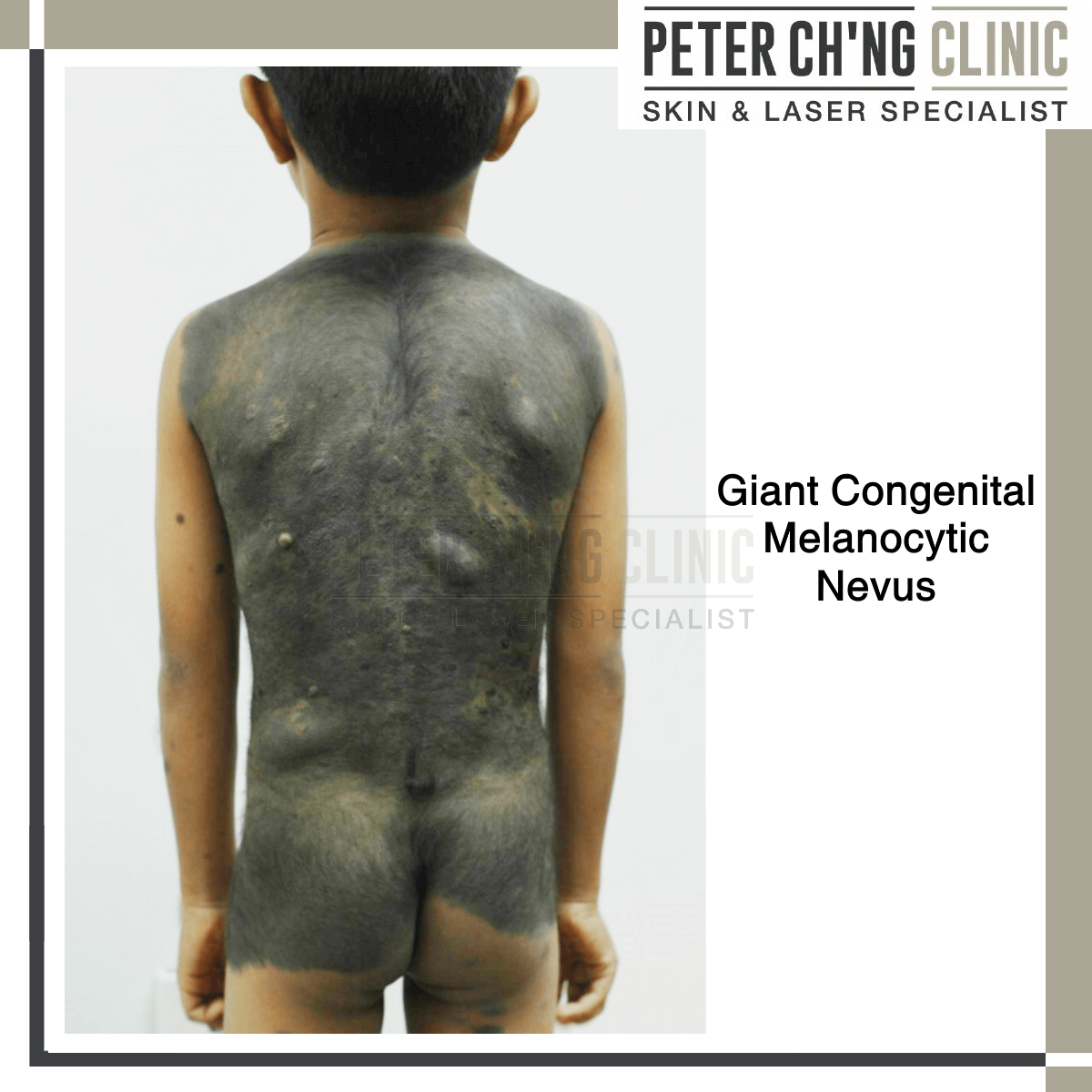
And in other cases, especially port wine stains, the skin at the area of the birthmark can grow excessively and cause disfigurement.
Treatments for birthmarks depend on the types of birthmarks. Pigmented birthmarks are caused by the pigments deep under the layer of skin creating the discolouration and birthmarks on the skin surface. Hence, pigment lasers are used to penetrate into the skin to reach these pigments.

On the other hand, vascular lasers are useful for vascular birthmarks. These are treatments that focus on the blood vessels that causes the visible birthmarks.
Chemical peeling treatment is often mentioned in treating birthmarks, but it's actually not helpful compared to laser treatments. Besides, many traditional methods of treating birthmarks using high concentration of chemicals may cause scarring.
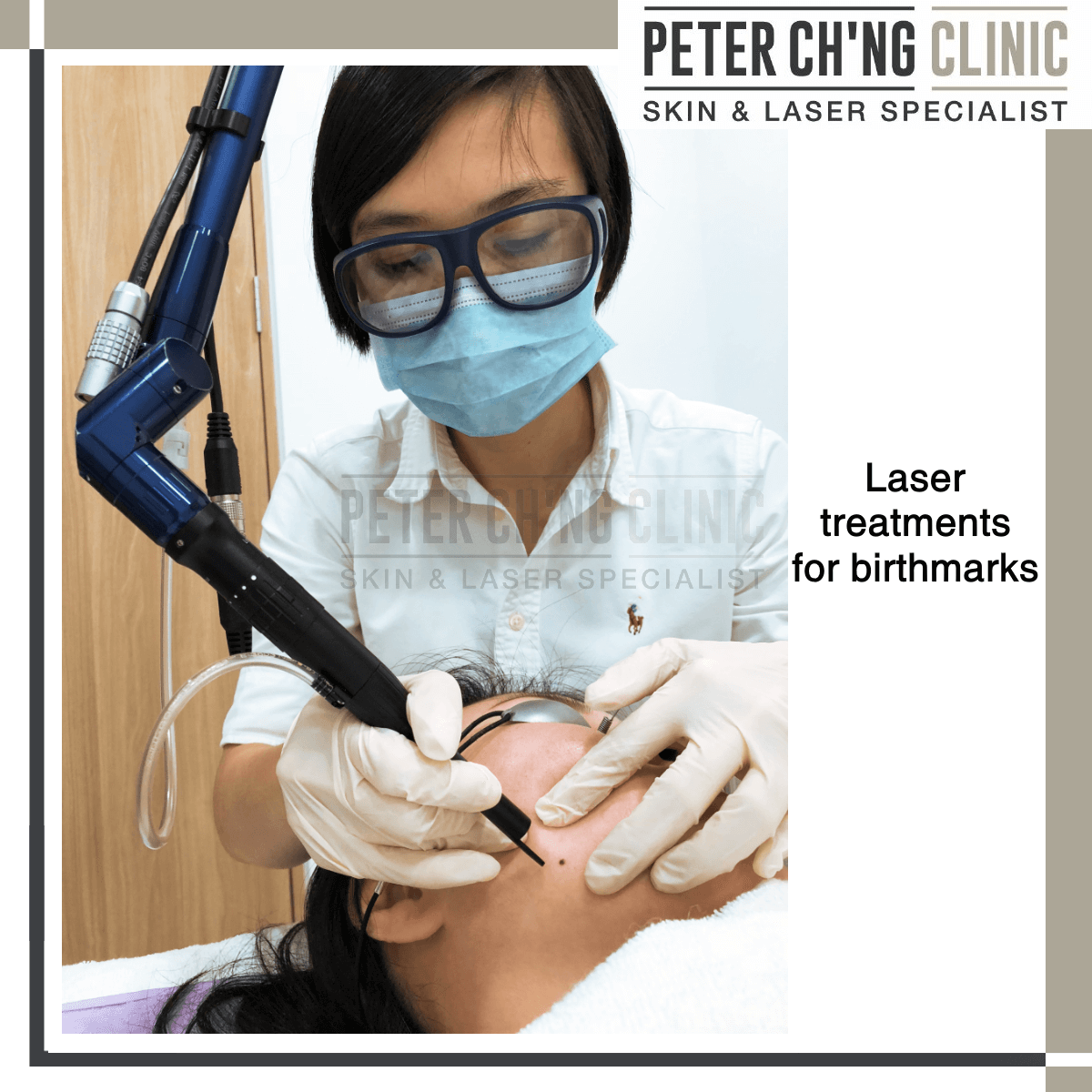
If you're planning to have a laser treatment to get rid of your birthmark, it is good to know that multiple treatment sessions are usually needed to fully remove the marks, and these sessions come with a short downtime, where scabs or pin-point bleeding may form in some cases, but is usually resolved within a week.
Good post-care following the treatment is also important, including sun protection for the skin and topical antibiotic gel to avoid infection.
*Editor’s note: Are you looking to get a laser treatment for yourself or a loved one to get rid of a birthmark? To know more about the treatment, call us at +6011-22882299, WhatsApp us here, or book an appointment with Dr Loo here!
Final tips
Finally, here's a few tips for you regarding birthmark removal:
- First, make sure the lesion you have is not suspicious of any skin cancer risk (especially for moles like basal cell carcinoma)
- If you notice anything suspicious about your birthmark (like moles changing in shape or colour, or if it itches or bleeds abnormally), get a biopsy to check for any risk of skin cancer
- Most birthmark removal treatments require multiple sessions to achieve a good clinical outcome with minimal post-inflammatory hyperpigmentation/scarring reaction
- Good laser treatment skills by the doctor help to determine the appropriate depth of the laser needed and minimise any chances of complications
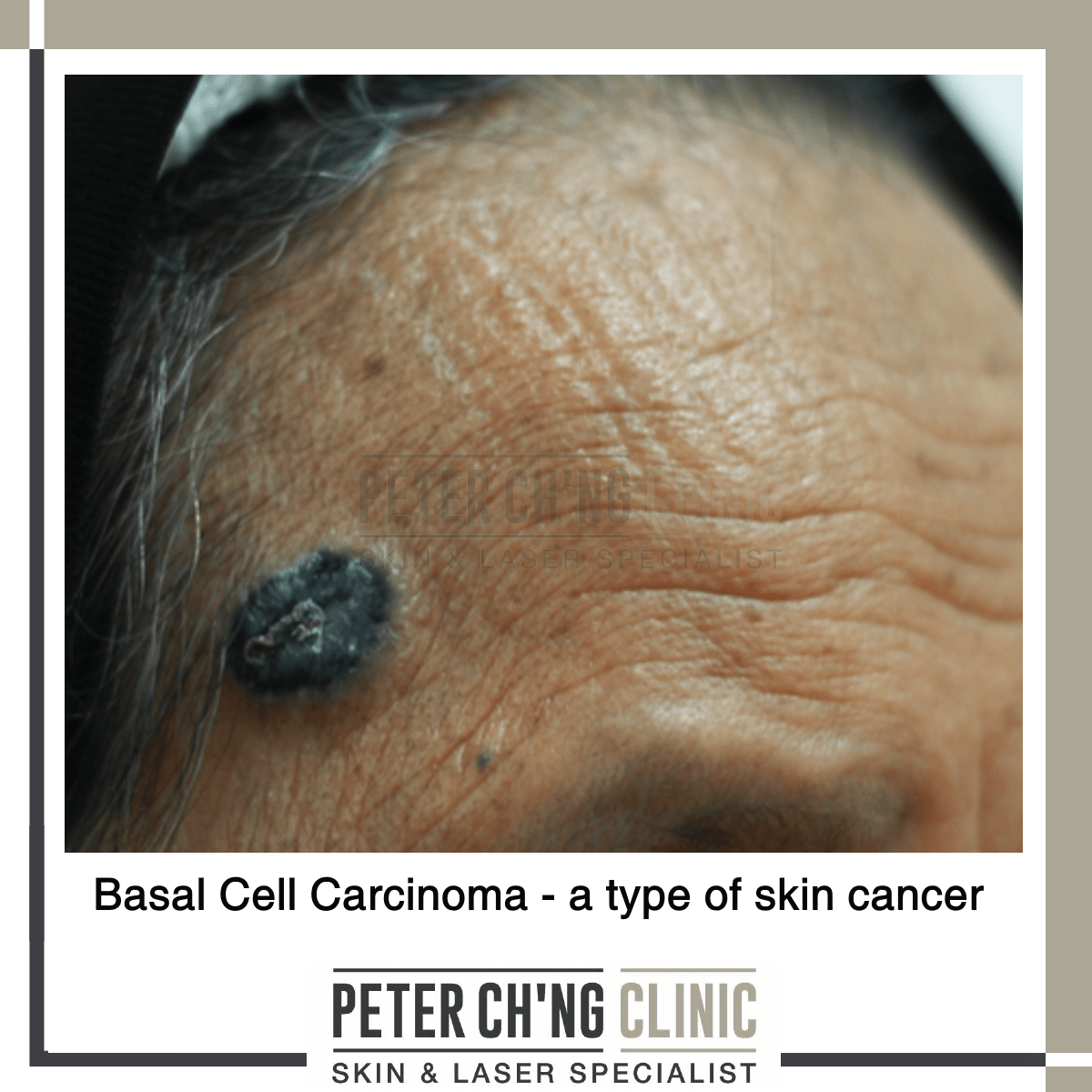
So, do you have a clearer idea on what type of birthmark you have and how to remove it now?
Stay tuned next week as we go through some of the interesting myths about birthmarks!
See ya!
*Editor’s note: As an esteemed aesthetic physician, Dr Loo is well known for always putting patient's safety and satisfaction as her number one priority. If you’d like to ask more about stretch marks or C-sec scars, or have a discussion with Dr Loo, call us at +6011-22882299, Whatsapp us here, or book an appointment with Dr Loo here!

If you’d like to ask more about your skin condition or have a discussion with Dr Loo, call us at +6011-22882299, Whatsapp us, or book an appointment with Dr Loo here!
Treatments mentioned in this article :
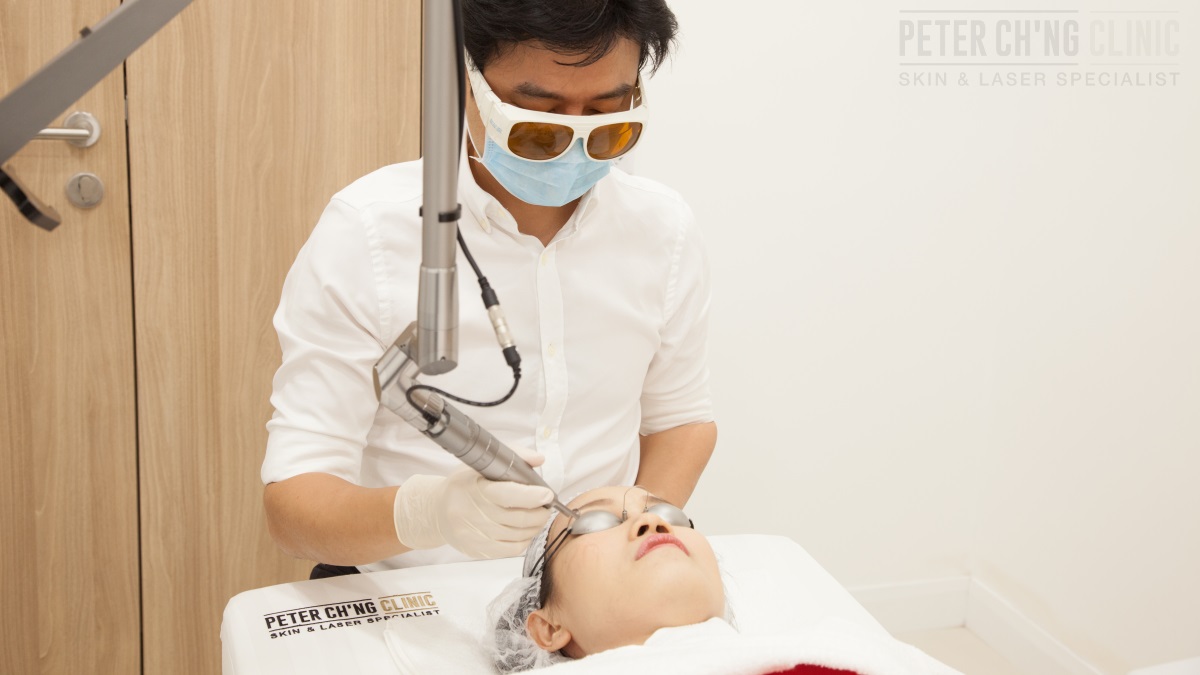
Pigment Laser
Laser treatments are always one of the most effective treatments to get rid of pigmentation on the skin. Pigment lasers can penetrate deep into the skin and remove the pigments beneath the skin to make the spots on the skin surface disappear.
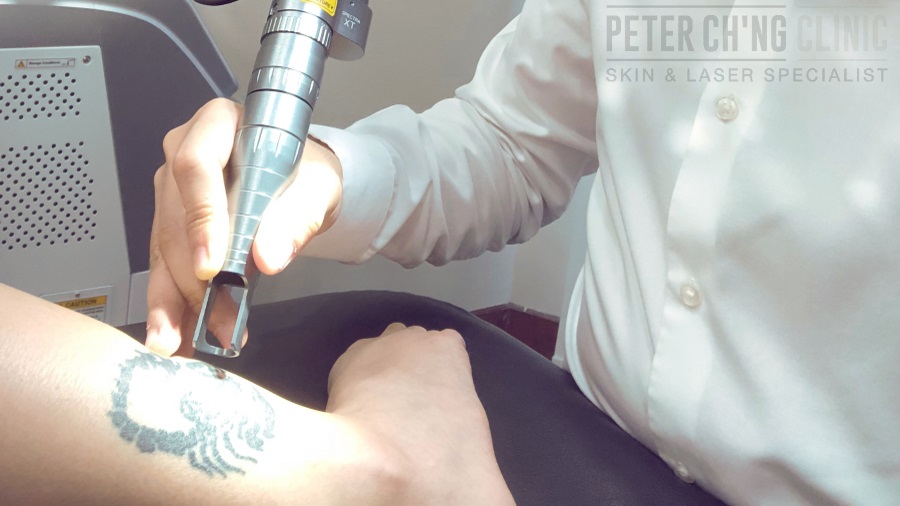
Laser Treatments for Moles, Birthmarks & Tattoo
Moles, birthmarks and tattoos all require treatment at the inner layer of our skin. For these conditions, laser treatments are usually the safest and most effective options for removal.
